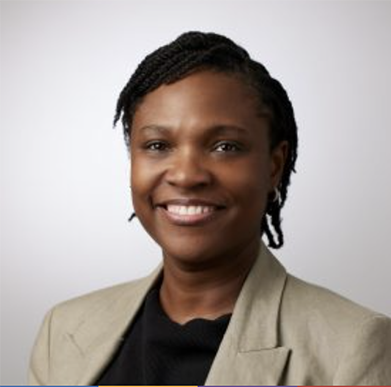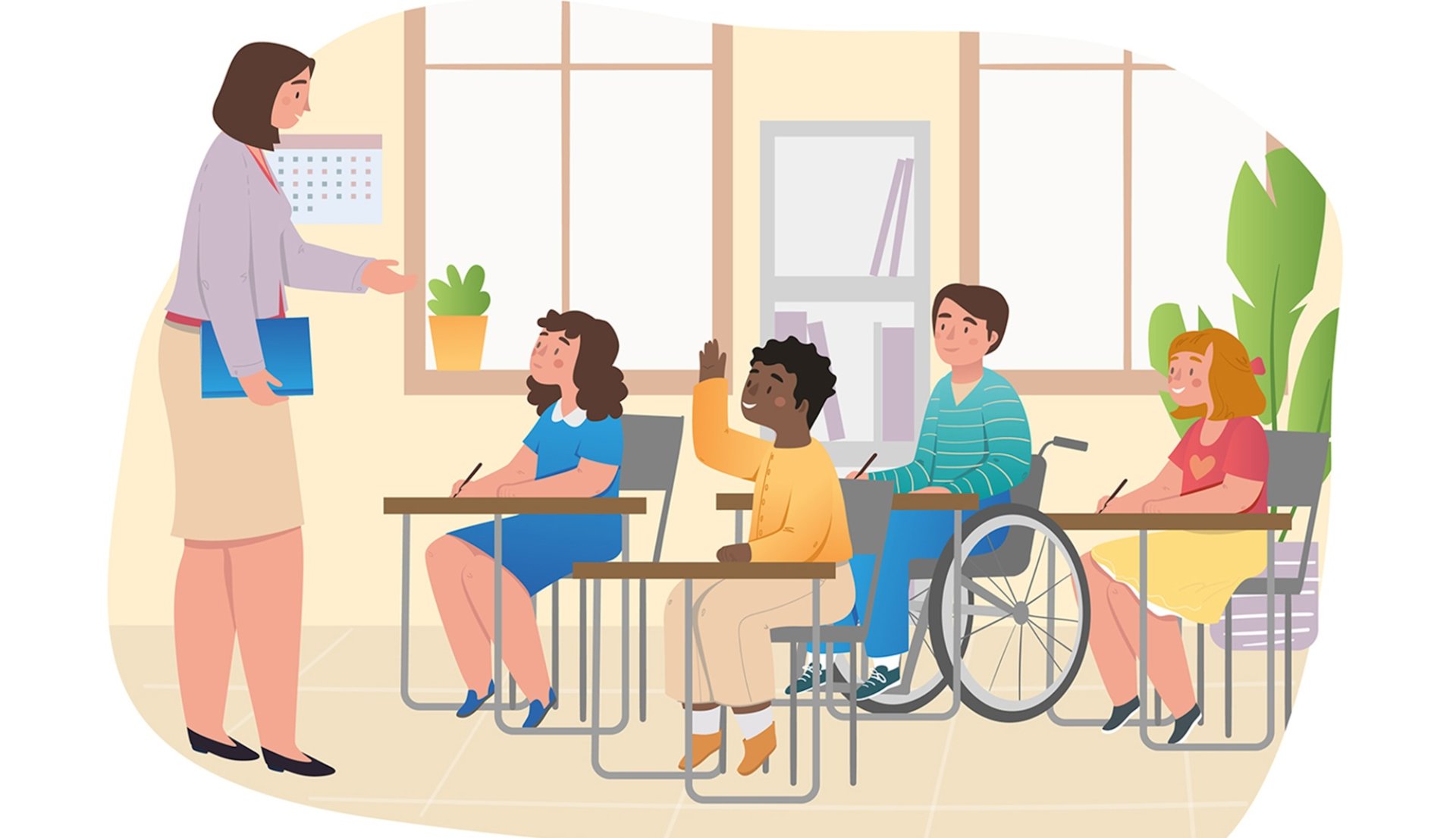Key Takeaways
- Implicit bias can lead to students with disabilities to be misidentified and misplaced.
- Four key factors in special education have shown to harm students of color with disabilities at higher rates.
- Tips, resources, and support to identify and place students of color with disabilities accurately and without bias.
In Nikki Woodward’s 24-year career as a special education teacher, she has seen one too many students of color with disabilities misidentified and misplaced—meaning they did not receive the services needed to help develop academic and social skills, improve their well-being, and prepare for a successful life after school. The Maryland educator has also seen it close to home.

Years ago, when Woodward’s cousin was an infant, she noticed certain traits in his social interactions that were atypical. She suspected autism.
The diagnosis from early interventionists determined ADHD, and for years special education teams provided services (and medication) to help manage his behavior—missing the fact that the child had no capacity to have a conversation or interact with others. He avoided eye contact but could sit for hours to build any Lego set put before him, a classic sign of hyper fixation, Woodward explains.
“He was in fourth grade when he went back to the ADHD specialist,” she recalls. “They literally looked at him and said: ‘This child does not have ADHD. This child has autism.’”
Woodward says that oftentimes diagnoses for autism are reserved for kids who don't look like her or her cousin.
“It is easy for [a specialist] to say, “Oh, he's a Black kid, [with behavioral issues], he has to have ADHD.”
After receiving the right diagnosis and placement, Woodward’s cousin is now a junior in high school and thriving—currently touring prospective colleges.
“This crosses color line too,” Woodward says, and adds: “We need all educators to check their own bias about how they show up and allow their perceptions of the community they live within [or outside of] impact the way they make recommendations for kids.”
The Promise of IDEA
When the "Education for All Handicapped Children Act" passed, in 1975, students with disabilities who were found eligible for special education services would be provided, by law, a free and appropriate public education using an individualized education program (IEP)— based on the special education evaluation and the unique strengths and needs of the student. After the 1990, reauthorization, the law became Individuals with Disabilities Education Act (IDEA).
Since then, IEPs have benefited many students. But along the way, something surfaced: Implicit bias.
Consequently, many students of color and multilanguage learners have been disproportionately misidentified and misplaced, impacting the types of services students needed or did not need.
Implicit Bias Defined
Implicit bias refers to the attitudes, beliefs, or stereotypes that affect our understanding, actions, and decisions in an unconscious manner. These biases often appear in the forms of microaggressions and stereotypes. No one is immune from it.
“Understandably, most people aren’t too eager to be that candid about their implicit bias or how they’ve subjected others to microaggressions,” Makeda Harris explained to NEA Today, in 2022.
Harris leads implicit bias trainings for NEA, and here’s what she wants educators to know: Everyone has implicit bias. It’s what you do with that awareness that can help give rise to thriving learning environments for your students.
Virtual Book Club Supporting Disability Rights and Inclusion
As part of NEA’s Disability Rights and Inclusion Work (DRI), NEA is facilitating member-led virtual book clubs to engage members in a DRI journey, raising awareness about the perspectives of people with disabilities and building understanding of the environmental, social, and attitudinal barriers that encumber true inclusivity and accessibility.
Judgement Before Discovery
Implicit bias comes in many forms and can often contribute to how even the most well-intentioned educators respond in their learning environment. It can show up as language choice, teaching methods, grading practices, and accessibility practices.
For example, an educator could assume that a student with a disability is not smart enough to complete specific tasks, and therefore, won’t set ambitious goals or provide rigorous assignments—leaving the student unchallenged.
“People make a lot of judgment calls,” says Woodward. “Those biases … play into your beliefs around the child's capacity.”
She says it’s especially problematic when educators judge students before they fully understand their disability or make assumptions about them based on their race or ethnicity or even their family structure. These judgements can, if not checked, inform the IEP process.
What the Research Says
Research suggests that the expectations a teacher has for students can be influenced by the student’s race and ethnicity. The same applies when considering a disability, which can increase the probability of a student being misidentified.
For example, if a student's primary language is Spanish and most testing is done in English, “We cannot then say that they have a disability,” says Brittany Patrick, a senior policy analyst for NEA. “We have to question whether the student was able to truly access the instruction in both languages and understand not only the tests but also the daily lessons.”
According to 2021 ED data, specific racial groups tend to fall within specific disability categories at higher rates. Some of this stems from what’s called disproportionality.
Key findings include:
Disproportionality Enacted in Four Ways
Disproportionality is the over- and under-identification and representation of culturally and linguistically diverse children in special education, especially in areas of discipline and placement (the location of where special education services will be provided). According to Patrick, four factors are at play that harm students of color and multilanguage learners through the IEP process:
-
Under Identification: The failure to appropriately identify a child who has a disability and needs special education services as a child with a disability.
-
Over Identification: The inappropriate identification of a child who does not actually have the identified disability and who does not need special education services as a child with a disability.
-
Discipline: Research continues to show that Black students with disabilities are substantially more likely than any other group to experience the most extreme forms of discipline due to out-of-school suspension, which results in loss of learning opportunities and instructional time.
-
Placement: Students of color with disabilities are more likely to be prescribed a placement that is outside of the general education, especially when they don’t need it. This often leads to students being placed in more restrictive learning environments and perpetuates segregation.
Disability Justice for All
NEA strongly believes schools should support all students, no matter their race, gender, the language they speak, or ability.
To help chip away at some of these inequities, Patrick says it’s important to examine disability through a social model, not a medical model, which suggests there’s a problem needing to be fixed.
“Instead, we should be analyzing the environment and determining how best to modify and accommodate it, as well as our own teaching practices to meet the needs of the student—in addition to being aware of our own biases,” she says.
Another critical piece is for the IEP team to examine the exclusionary factors within IDEA, which allow for a student’s background and experiences to influence their performance.
“If, for example, a student hasn’t had access to high quality education, it wouldn't make sense to sit at a table and diagnose a student with a disability,” says Patrick, explaining that it’s more of a gap in access to high quality education than a learning disability.
For Nikki Woodward, it’s important for special education teams to collaborate with parents to ensure they understand the IEP, have all the information needed to make sound decisions, and that their input is incorporated into the implementation process.
Additionally, all educators should advocate for the proper funding and resources (which includes educator time) to support special education programs.
“Our goal is for students to stay on academic track with their same level peers and be successful,” says Woodward. “As a collective, we all have a role to play in achieving this.”
Disability Rights and Inclusion Online Learning Opportunity
NEA is offering a curriculum to help educators learn more about how to become a more inclusive educator, to challenge biases and undo ableism in our education system, and to adapt an asset-based mindset to ensure that our schools are accessible and inclusive for all.
Disability Rights and Inclusion (DRI) Coalition Grant
To support the formation of an alliance of NEA local affiliates that will advocate on behalf of educators and students with disabilities, the NEA has created the Disability Rights and Inclusion (DRI) Coalition Grant Program. DRI coalition affiliates will receive a one-time grant of up to $25,000 to implement initiatives that build member advocacy and actio






